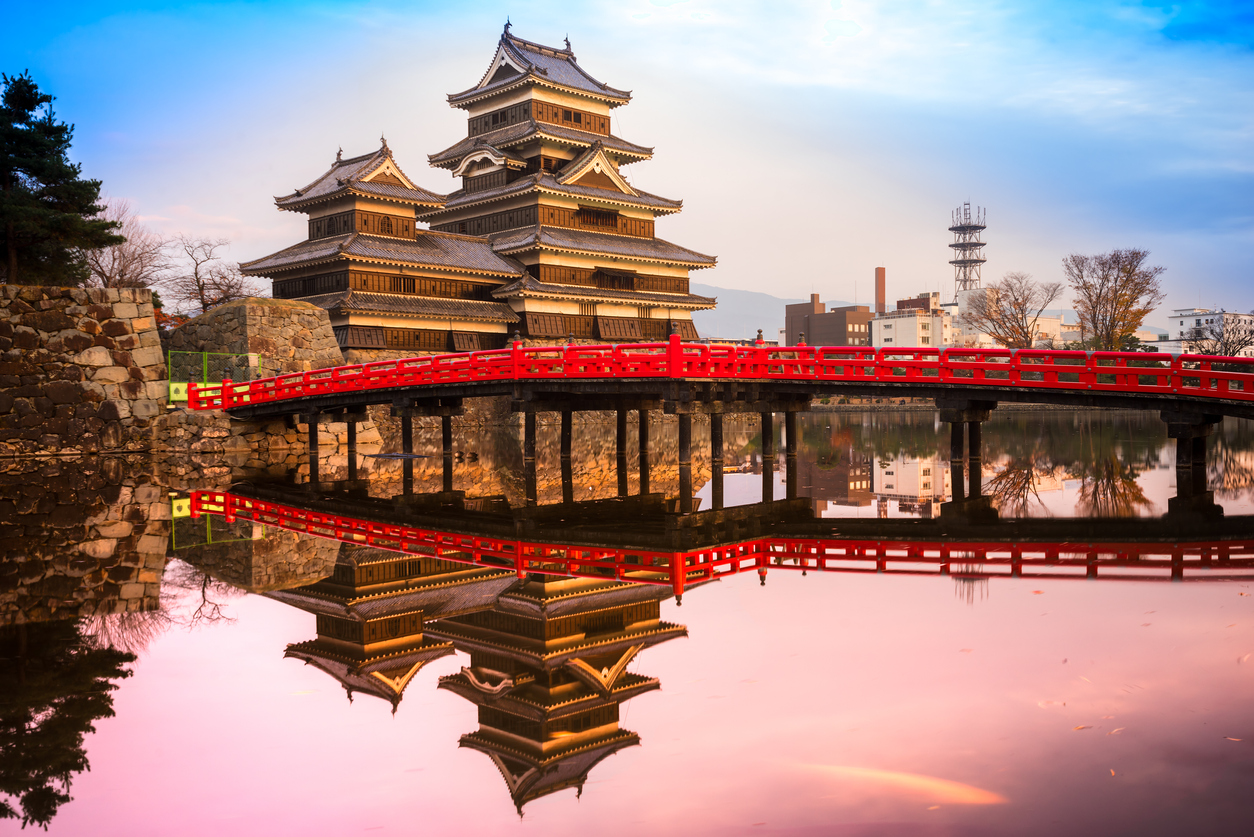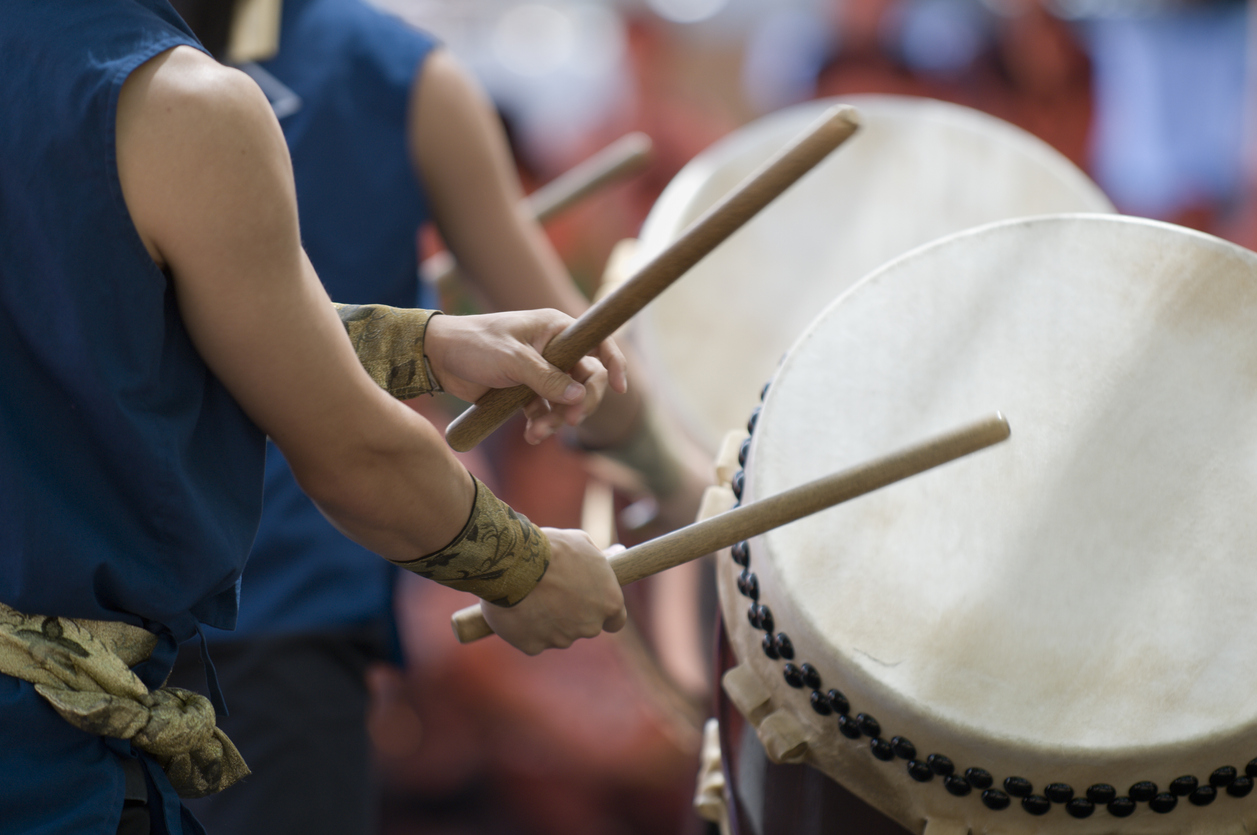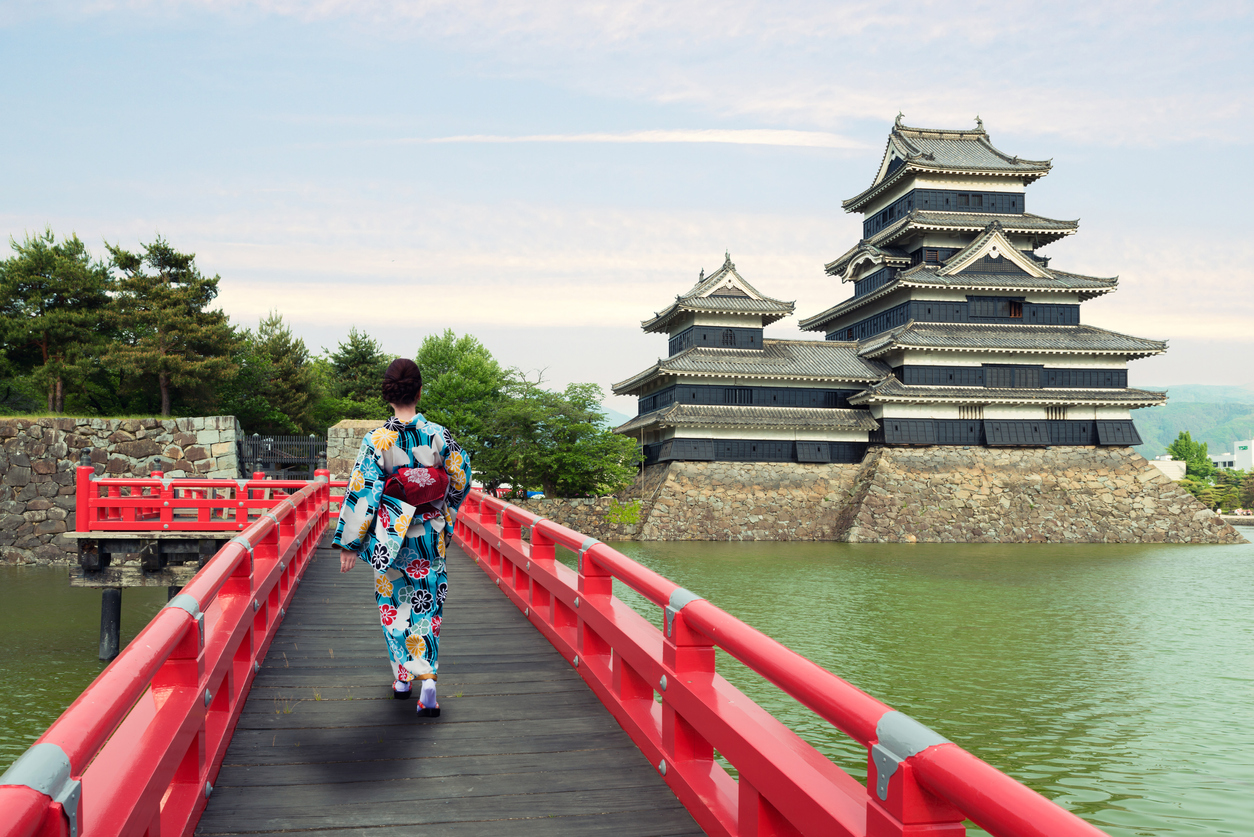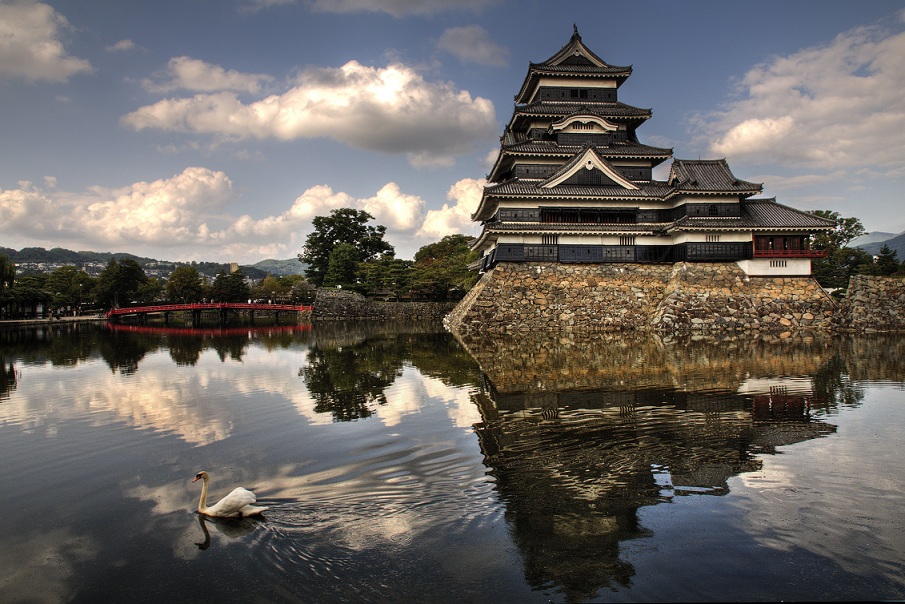On July 28-29, the Taiko Drum Festival takes place at the gates of the medieval castle with drummers participating from all across the country.
On the first Saturday in August, the Masumoto Bon Bon is celebrated with crowds of up to 20,000 people dancing in the street.
Matsumoto is located in the central region of Nagano and considered the gateway to the Japanese Alps. It’s the birthplace of the internationally renowned artist Yayoi Kusama, home to the oldest castle in Japan and hosts many summer festivals combining art and music.
The Tenjin Festival began back in the 17th century, and every July 24-25 since then, people gather to worship the Tenjin god in the Shinto shrines of Japan. The finishing point is at the Fukashi Shrine in Matsumoto, where eighteen large dashi or butai (a traditional portable shrine) from different districts of the city centre come together. Some of the shrines that are carried through the streets on people’s shoulders are more than 100 years old.

A few days later, on July 28-29, the Taiko Drum Festival takes place at the gates of the medieval castle with outstanding taiko drummers from all across the country showing off their skills performing both traditional taiko songs and more contemporary performing arts.
On the first Saturday in August, the Masumoto Bon Bon, which began in 1975, is celebrated with crowds of up to 20,000 people dancing in teams through the streets in the city centre. Matsumoto’s Obon Dance event, the Oshiro Bon Odori, also takes place in August (14-16) right in front of the castle. The sound of the taiko drum in step with the old songs of the region, the dancers and the locals with their traditional costumes, all make for a very enjoyable evening. One of the oldest forms of Japanese musical theatre, the Takigi Noh, is also common during the summer months.
Besides the summer festivals, Matsumoto also boasts many cultural and historical attractions that can be enjoyed all year round. Matsumoto Castle is one of the most beautiful sites and is listed as a National Treasure. Built in the late 16th century, it’s one of the oldest surviving castles in the country.

Due to its black exterior, the building is also known as the “Crow Castle”, and its five-storey main tower, built in the late 16th century, is the oldest surviving castle tower in the nation. You can watch swans and carp swim around in the castle moat, and costumed ninjas and samurai entertain adults and children and pose for photos with visitors.
Medieval weaponry and armour are on display inside the castle, along with information on the building’s history, and the views of the city and the surrounding landscape are nothing short of spectacular.
The nigh-time lighting of the castle and its surroundings, the summer, autumn and winter festivals and the moment when the cherry trees blossom are all beautiful moments to truly appreciate the beauty of the fortress at different times of the year.
Art, nature and relaxation
Matsumoto also has several different museums such as the Japan Ukiyoe Museum, which has more than 100,000 pieces of classic Japanese woodblock printing on display, and the Matsumoto Museum of Art, which features works of contemporary art from the city native Yayoi Kusama, and others.
One of the most popular places to enjoy nature is Kamikochi in the Northern Japan Alps, which is home to some of the country’s most spectacular mountain scenery. It’s easily reached from Matsumoto and is a good place to start hiking in the mountains and admire the beautiful views along the Azusa River and from the Kappabashi Bridge.

And after a day of sightseeing, there’s nothing better than finishing the day with a bath in the Asama Onsen Hot Springs, where you can find hot springs open to the public and several accommodation options with onsen baths. The Asama Onsen baths were previously reserved for Japan’s noble class, especially Biwanoyu, and boasts the title of “The Favorite Bath of the Rulers of Matsumoto Castle”.
Matsumoto can be reached by train from Tokyo Shinjuku Station (2 hours 40 minutes), Nagoya Station (2 hours) or the nearby Nagano Station (50 minutes). The area is also connected to the city of Takayama in the neighbouring Gifu Prefecture (2 hours and 30 minutes).






